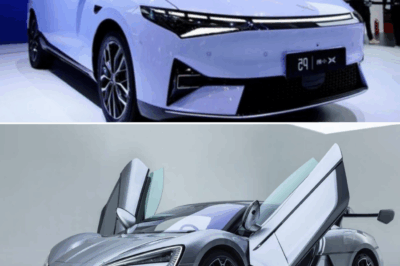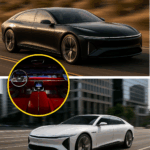For generations, the Mustang has offered accessible performance, iconic styling, and practicality at an affordable price. Now in its seventh generation, the Mustang continues to appeal to a wide range of buyers. While the V8 5.0-liter engine may be the easy choice, the EcoBoost four-cylinder engine helps keep the price down and is still plenty fun. A much-needed new infotainment system will transform the interior and help the Mustang feel modern for many years to come.
2025 Ford Mustang Review
Pros
High-tech interior display is fast and easy to read.
All engines offer strong acceleration.
Larger back seats and trunk offer more practicality than competitors.
Cons
No significant increase in performance.
Interior and finishes can feel cheap.
Desirable options significantly raise the price.
What’s New

The Mustang GTD, inspired by race cars, will have 800 horsepower and a price tag over $300,000.
No other major changes expected.
Part of the seventh-generation Mustang, which debuted in 2024.
Overview

With both the Dodge Challenger and Chevrolet Camaro discontinued, Ford’s Mustang is now the last remaining muscle car. But even with no direct competitors, Ford has doubled down and redesigned the iconic Mustang. Available with either a turbocharged four-cylinder engine or the traditional V8 5.0-liter engine, the Mustang offers various trims for a wide range of buyers. For 2025, Ford adds a new trim to the Mustang lineup: the GTD. Strongly inspired by the Mustang GT3 race car, the GTD integrates several race car features, including a push-rod suspension system, adjustable dampers, and a rear drive shaft (combining the transmission and rear differential into a compact unit). Oh, and it also boasts a supercharged 5.2-liter V8 engine with a massive 800 horsepower.
Once a choice for both enthusiasts and non-enthusiasts alike, V8-powered cars are becoming rare. But the Mustang continues to offer the tested and proven engine in three versions. In the GT, the 5.0-liter V8 produces 480 horsepower, and in the high-performance Dark Horse, it makes 500 horsepower. For 2025, the GTD will feature the 5.2-liter supercharged V8—similar to the much-missed GT500 engine—generating over 800 horsepower. As a bonus, Ford still offers a six-speed manual transmission for the GT and Dark Horse trims.
With traditional Mustang competitors like the Camaro and Challenger now in history books, it’s hard to find a direct competitor for the Mustang. Smaller and nimbler, the BMW 2 Series still offers usable back seats and trunk space, along with a performance variant to keep up with the Mustang GT. Other sports options can be found in the Toyota GR Supra and Nissan Z, although both of these cars lack rear seats and don’t offer as much practicality as the Mustang. See our expert rankings below for a thorough review of the Mustang.
Performance
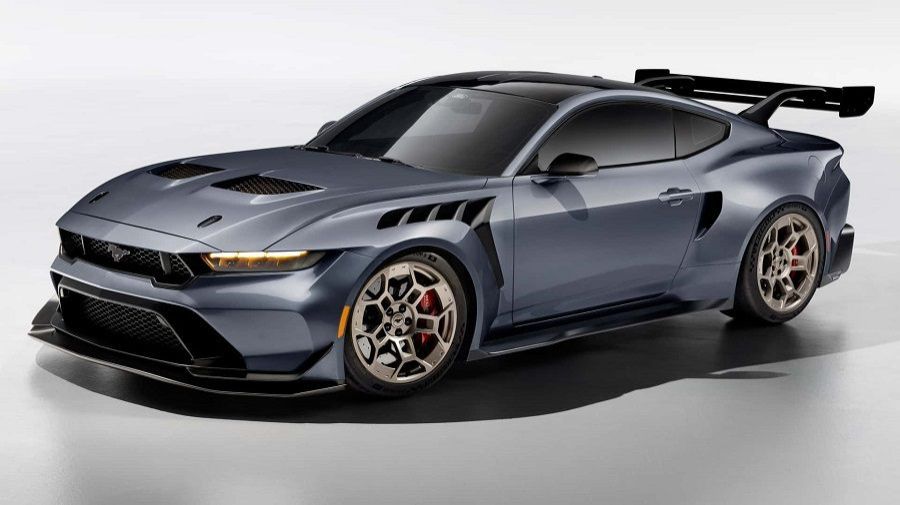
Regardless of which version of the Mustang you choose, the performance is sure to entertain. We tested three versions: an EcoBoost, a GT with a six-speed manual, and a GT with a 10-speed automatic. All Mustangs come with the Performance package. The EcoBoost reaches 60 mph in 5.6 seconds, the six-speed GT accelerates in 4.8 seconds, and the automatic GT is even quicker, reaching 60 mph in 4.3 seconds. The quarter-mile times follow the same order—the EcoBoost hits 94.2 mph, the six-speed GT reaches 111.6 mph, and the automatic GT hits 113.1 mph. Other sports cars may be slightly faster, but the Mustang makes speed easily achievable.
Each Mustang performed impressively in braking tests, stopping in 100 feet or nearly 100 feet from 60 mph. Not only are these short distances impressive for an affordable sports coupe, but each version also delivered excellent brake feel and impressive stability. Handling is another strength of the Mustang, with all three versions relying on Pirelli P Zero tires to achieve 0.97 g or 0.98 g around our skid pad. Once again, that’s impressive for the price. Our test drivers also noted it’s relatively easy to extract the maximum from the Mustang’s chassis, noting excellent body control and precise steering.
When not on the track or winding back roads, the Mustang—regardless of its powertrain—is perfectly capable for everyday driving. The EcoBoost four-cylinder engine is powerful enough to keep up with traffic, and the 5.0-liter V8 in the GT delivers enough torque to easily cruise through traffic and climb long highway inclines. We really liked the six-speed manual, but all of our drivers agreed the 10-speed automatic is a perfectly acceptable option if you don’t want to deal with the clutch.
Comfort

Whether you prioritize comfort or performance, the Mustang delivers. Both the EcoBoost and GT models feature non-adjustable suspension systems that absorb most road bumps. Optional as part of the Performance package is the adaptive MagneRide suspension. Compared to the standard suspension, MagneRide is firmer, but performance enthusiasts won’t feel much of a compromise. These enthusiasts might also appreciate the optional Recaro sport seats, which are comfortable, but larger drivers or those wanting ventilated and heated seats will appreciate the more comfortable options available.
Among the new interior changes to the Mustang, the central air vents have been lowered on the dashboard. These vents don’t provide as much adjustability or airflow as before, and we found ourselves constantly reaching to reorient them. Fans of physical climate controls may be disappointed, as all controls are now digital in the Mustang. While most controls are located at the bottom of the touchscreen, some, like fan speed, require an additional menu to pull up.
Like the ride, enthusiasts will likely not mind the interior noise levels of the Mustang. There’s some tire and road noise from the wide tires, but the rest of the cabin is fairly well-insulated, even in the convertible model. We found the standard exhaust to sound quite good on both the EcoBoost and GT models, though there is an optional active exhaust system if you want a little more noise.
Interior

While the standard seats are comfortable, the optional Recaro sport seats with thicker padding might make it difficult to slide in and out of the car without pushing the seat back. The rear seats are cramped, especially in terms of headroom, although they are fine for short trips. The long doors of the Mustang can make entering the car tricky in tight parking situations. If you choose the convertible, dropping the roof makes it much easier to get into the back seats.
We had no issues with the standard non-Recaro seats in the Mustang, and drivers will appreciate the driving position that works well for both highway cruising and track driving. Visibility through the flat windshield is quite good, but the thick windshield pillars can obscure part of your view on narrow roads. Unfortunately, the rearview mirror hasn’t been redesigned for this generation of the Mustang and is still too small for a car this size.
Inside, the Mustang offers a fully digital dashboard and a minimalist button layout. Previously, the steering wheel of Mustangs was cluttered with controls, so we were happy to see Ford streamline the layout to reduce distractions when using the buttons. Most other functions and settings are accessible via the large digital infotainment screen. While it may be a bit difficult for some drivers, the screen is easy to read, responsive, and fairly intuitive. The Mustang won’t take long for most owners to figure out.
Technology
This is where the new Mustang generation really stands out. In front of the driver is a 12.4-inch digital display linked to a 13.2-inch touchscreen powered by Ford’s Sync 4 system. The dashboard offers several configurations, while the touchscreen is easy to read, quick to respond, and has a relatively simple menu structure. We found the navigation system to be fast and efficient.
The optional 12-speaker B&O sound system was less impressive. It can get loud, but it lacks real nuance when the volume is turned up. There’s a wireless charging pad available, and plenty of USB charging ports within easy reach.
Equipped with standard driver assistance technologies such as automatic emergency braking and blind-spot monitoring, the Mustang is average in this segment. Most systems work without complaints, but we found the lane-keeping assist system a bit clumsy, struggling to keep the Mustang in its lane, leading to occasional lane hopping.
Trunk Space
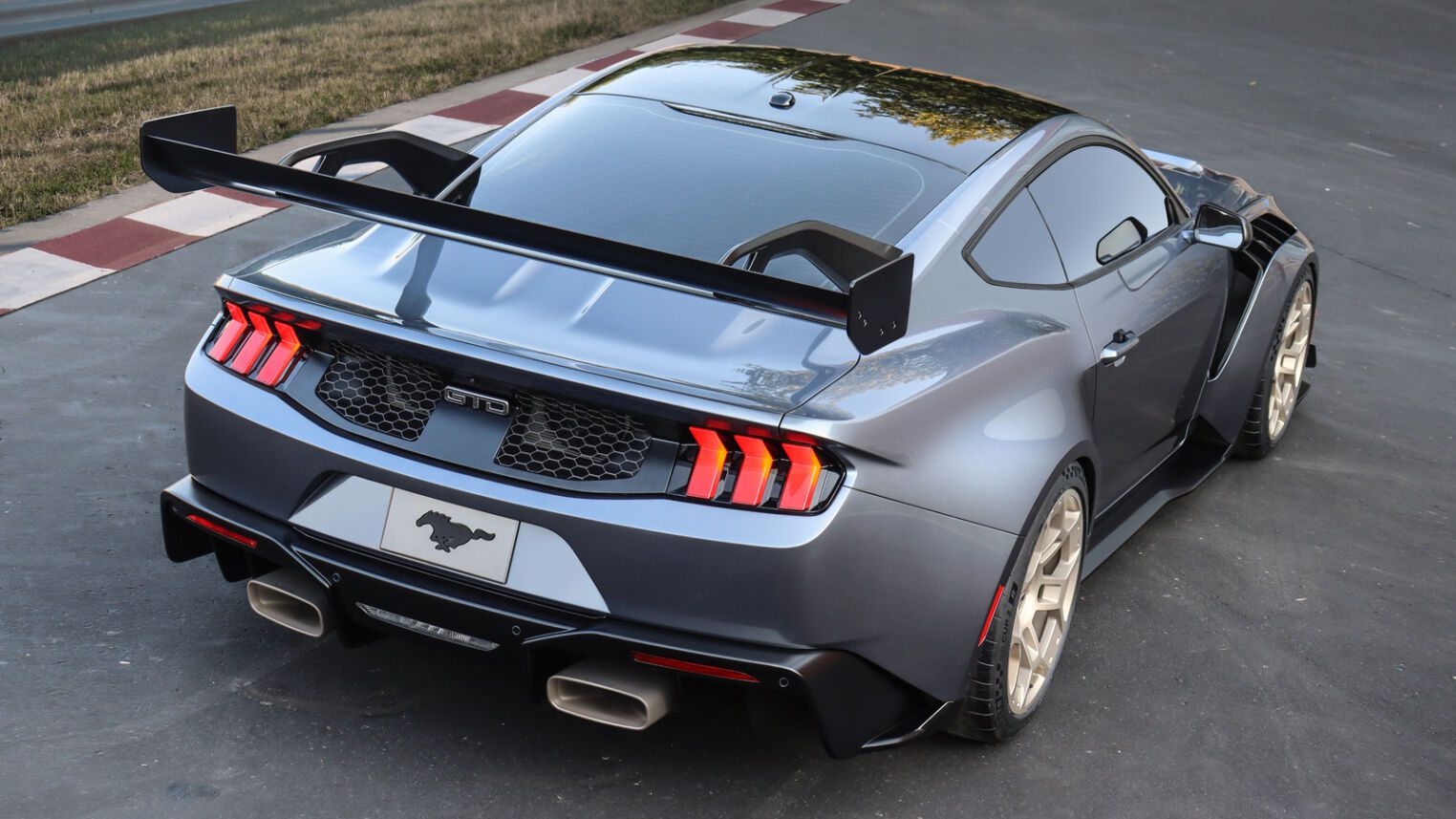
The Mustang is completely capable as a daily driver and for running errands. While the trunk has an odd shape, its 13.5 cubic feet in the fastback and even 11.4 cubic feet in the convertible is much larger than the Camaro’s 9.1 cubic feet. It makes the most of its space, easily fitting golf bags or luggage. It may not have as much room as the Toyota GR Supra and Nissan Z, both hatchbacks, but the Mustang’s traditional trunk allows your belongings to be more securely and safely separated. A bonus for the convertible is that the trunk doesn’t lose space when the top is down.
The interior storage provides enough room for sunglasses, phones, and drinks, and everything remains secure during the exciting ride. There’s space for car seats, but you may have trouble fitting them inside.
Fuel Economy
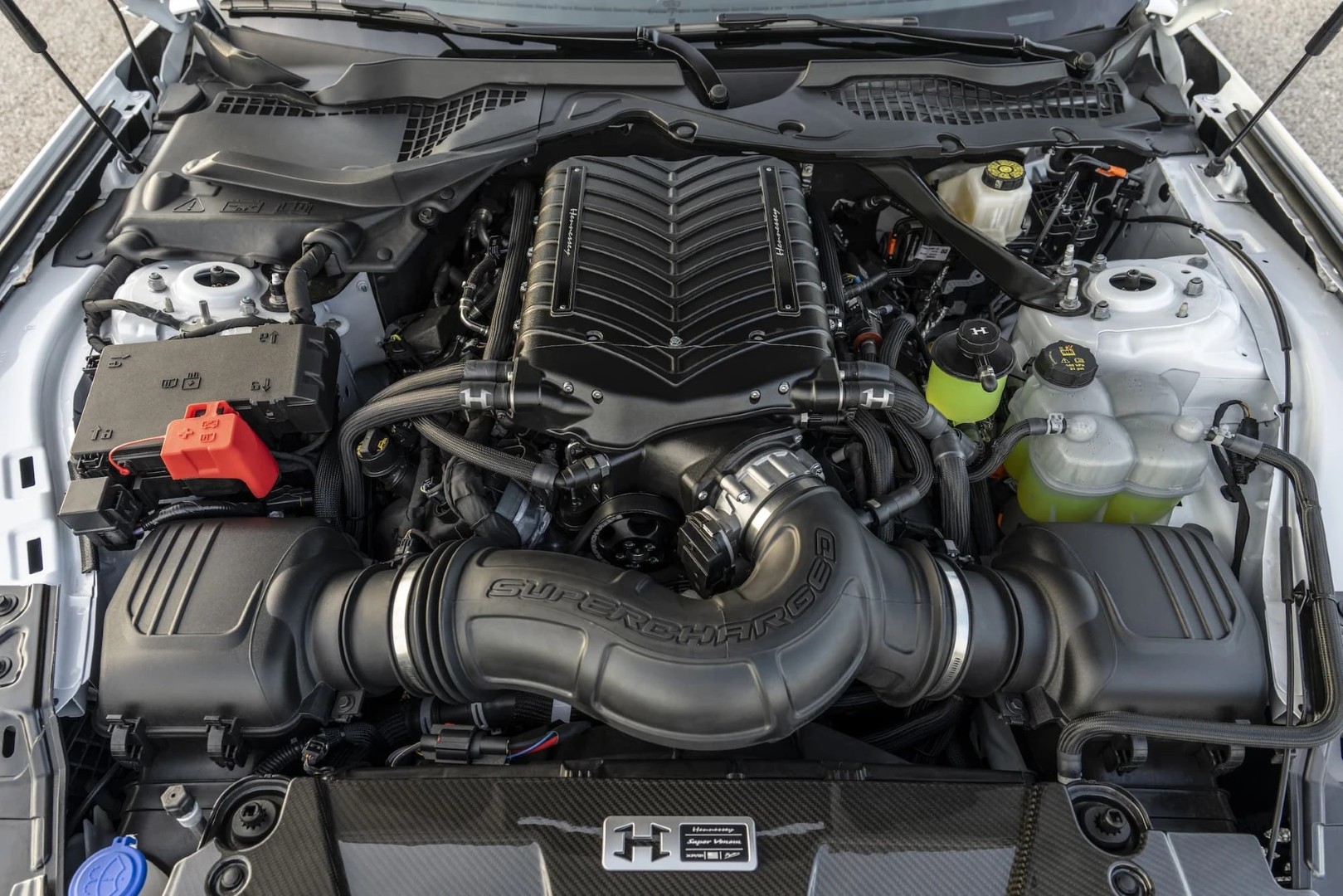
We tested both the EcoBoost and GT models, the latter with the six-speed manual, on a 115-mile evaluation route and found it largely matched EPA estimates. The four-cylinder EcoBoost model, with an EPA estimate of 26 mpg combined (22 city/33 highway), achieved 26.0 mpg. The GT model with the V8 engine yielded 18.0 mpg, compared to the EPA estimate of 17 mpg combined (14 city/23 highway). These numbers are in line with what you’d get from competitors, although the V8-powered GT lags a bit behind turbocharged competitors like the Toyota GR Supra and BMW M240i.
Conclusion
Buying a basic Mustang EcoBoost is an affordable way to get behind the wheel of an American icon. But the GT, aimed at performance, faces more compelling competition from the Toyota GR Supra, BMW M240i, and Nissan Z Nismo. Compared to these cars, the Mustang offers more personalization options but often features cheap plastics and interior parts.
Whether you’re after the iconic silhouette or legendary performance, Ford offers a Mustang for a wide variety of buyers. Both the EcoBoost four-cylinder and GT V8 models can be equipped to handle daily driving or track corners, while offering a sufficiently modern interior, even if it sacrifices some of the classic touches. That classic touch is strongest when you choose the six-speed manual paired with the V8 engine. Even though the Mustang isn’t as fast or efficient as some competitors, it’s still quick, fun, and largely uncompromising in daily driving. The Mustang remains a straightforward, honest car—something that’s rare these days—and you’ll never have to explain to your friends or family why you bought one. Even with the Camaro and Challenger gone, the Mustang continues to assert its dominance.
News
Chinese electric supercar – U9 is coming soon. U9 can accelerate from 0 to 100 km/h in just 2 seconds—faster than some of the world’s top supercars today.
Yangwang U9 Electric Supercar to Debut at Shanghai Auto Show The U9 model from BYD’s luxury brand, Yangwang, will be…
China worries about safety from self-driving cars
New Regulations Will Limit Testing Programs, Control Promotional Terminology, and Ban Remote Parking Features The Ministry of Industry and Information…
End of content
No more pages to load


